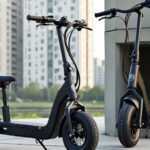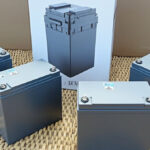Blue and red flashing lights are more than just eye-catching signals; they are vital tools used by emergency vehicles and law enforcement to ensure safety and efficacy in urgent situations. If you’ve ever seen these lights in your rearview mirror, you know they mean an emergency is happening, and quick action is required on your part.
- Red lights usually indicate the presence of emergency responders who need space to perform their duties. This includes fire trucks, ambulances, and sometimes police vehicles.
- Blue lights, primarily used by police, signal law enforcement presence and the need for other drivers to yield or stop, providing a clear path for these vehicles.
These color-coded signals help quickly identify the type of emergency vehicle approaching and are crucial for ensuring both safety and efficiency on the road.
Every motorist should be aware of their legal obligations when encountering these flashing lights, including yielding the right of way to these vehicles and understanding the potential consequences of misuse. Grasping their importance not only aids in complying with legal requirements but also plays a significant role in supporting emergency personnel during critical operations.
These brief insights strive to explain what blue and red flashing lights signify, why they matter, and how you should respond as a responsible citizen on the road.

Blue and red flashing lights definitions:
Understanding Blue and Red Flashing Lights
Importance of Color Distinction
Blue and red flashing lights are essential for the quick identification of emergency vehicles. In critical situations, every second counts. The distinct colors help drivers immediately recognize the type of vehicle approaching. This rapid identification is a lifesaver, as it allows other drivers to react swiftly, pulling over or stopping to clear the path.
- Red lights are often associated with fire trucks and ambulances. They signal an urgent need for space to allow emergency responders to reach their destination quickly.
- Blue lights are mainly used by police vehicles. They indicate law enforcement presence and often require drivers to yield or stop.
Color distinction is crucial not only for quick recognition but also for preventing confusion among drivers, especially in high-stress scenarios.
Visibility and Safety
Visibility is a key factor in the effectiveness of blue and red flashing lights. These lights are designed to be highly visible both day and night, ensuring they can be seen from a distance. This is vital for the safety of both emergency responders and the public.
For colorblind drivers, distinguishing between colors can be challenging. However, the brightness and flashing pattern of these lights help mitigate this issue. The intense, strobe-like effect can be perceived even if the colors themselves are not distinguishable. This ensures that all drivers, regardless of color vision, can respond appropriately.
The use of advanced technologies, like LED lights, improves visibility. They are brighter and more energy-efficient, making them more effective in various lighting conditions. This technological advancement plays a significant role in improving road safety and supporting emergency operations.
Legal Implications of Using Blue and Red Flashing Lights
Consequences of Misuse
Using blue and red flashing lights improperly can have serious legal consequences. These lights are reserved for emergency vehicles like police cars, fire trucks, and ambulances. Unauthorized use is illegal and can lead to hefty fines or even imprisonment.
When civilians misuse these lights, it creates suspicious vehicles that can confuse or mislead other drivers. This poses a significant risk to public safety. Imagine a scenario where a non-emergency vehicle uses these lights to maneuver through traffic. Not only does this disrupt the flow, but it also undermines the authority of actual emergency responders.
To prevent such misuse, vehicle regulations strictly control who can equip and operate these lights. Law enforcement agencies are vigilant in enforcing these rules. They have the authority to stop and inspect vehicles that appear to be violating these regulations. The penalties for misuse can vary by region but typically include fines and the possibility of criminal charges.
Guidelines for Civilians
When you see blue and red flashing lights behind you, it’s crucial to know the correct protocol. Your immediate action can help ensure the safety of everyone on the road.
-
Pull Over Safely: As soon as you see these lights, find a safe spot to pull over. Use your turn signal to indicate your intention to move aside. This allows emergency vehicles to pass quickly and without obstruction.
-
Allow Passage: Once stopped, remain in your vehicle and allow the emergency vehicle to pass. Do not resume driving until it is safe and clear to do so.
-
Emergency Protocol: In some situations, like when an emergency vehicle is approaching from the opposite direction, you may not need to pull over completely. However, always reduce your speed and be prepared to stop if necessary.
Following these guidelines not only helps emergency responders reach their destination faster but also keeps you and other road users safe. These lights are a signal that someone is in need of urgent help, and your cooperation is essential.
Blue and Red Flashing Lights in Technology
Innovations in Traffic Safety
Blue and red flashing lights are not just limited to emergency vehicles. Modern technology has found innovative ways to use these lights to improve traffic safety. In South Korea, for example, a system using radar and thermal cameras has been developed to alert “smartphone zombies”—pedestrians too interested in their phones to notice traffic. This system uses flickering LED lights embedded in the pavement to catch the attention of both pedestrians and drivers, reducing accidents at crossings.

These smart technologies are crucial in today’s world. They help ensure that everyone on the road, including those who might be distracted, stays aware of their surroundings. The system’s effectiveness is evident, with tests showing an 83.4% success rate in alerting drivers, according to the Korea Institute of Civil Engineering and Building Technology.
Commercial Products Featuring Flashing Lights
The market is flooded with commercial products that use blue and red flashing lights for safety and emergency purposes. LED strobe lights and emergency warning systems are popular choices for vehicles, providing improved visibility in critical situations. These products are designed for use in construction zones, volunteer emergency vehicles, and other non-traditional settings.

Vehicle accessories like these are vital for maintaining safety on the road. They ensure that vehicles can be seen clearly, even in poor lighting conditions. For example, the Guardian Angel Elite Series Safety Light offers a rechargeable, magnetic, hands-free option that is ideal for first responders and law enforcement officers. This product underscores the importance of LED technology in creating efficient and reliable safety solutions.
With the integration of technology into traffic management, blue and red flashing lights continue to play a pivotal role in ensuring road safety. Whether through advanced systems like those in South Korea or through commercial products available to consumers, these lights remain essential in warning and guiding road users effectively.
Frequently Asked Questions about Blue and Red Flashing Lights
What do blue and red flashing lights mean?
Blue and red flashing lights are primarily used by emergency vehicles such as police cars, ambulances, and fire trucks. These lights signal urgency and require immediate attention from other road users. The combination of blue and red is chosen because it is easily visible in various lighting conditions, helping to ensure that emergency vehicles can move through traffic quickly and safely.
What must you do if you see blue and red flashing lights behind you?
When you see blue and red flashing lights behind you, it’s important to stay calm and act promptly. Here’s what you should do:
- Check your surroundings. Look for a safe spot to pull over, ideally on the right side of the road.
- Signal your intentions. Use your turn signal to indicate that you are pulling over.
- Stop your vehicle. Once safely parked, remain in your vehicle unless instructed otherwise by an officer.
- Stay alert. Keep an eye on traffic and be prepared to move if needed.
These steps help ensure that emergency vehicles can pass without delay, which is crucial in urgent situations.
What is flashing blue and red in the sky?
Occasionally, you might notice blue and red flashing lights in the sky. This can happen when emergency response helicopters are in the area. These lights are similar to those used on the ground and serve the same purpose: alerting others to the presence of an emergency vehicle. They ensure visibility and safety during night operations or when flying at low altitudes.
Understanding the meaning and proper response to blue and red flashing lights is essential for maintaining safety on the roads and in the skies.
Conclusion
At Doot Scoot, we’re passionate about promoting sustainable urban transport solutions. Our focus on eco-friendly vehicles like eBikes supports a cleaner, greener future for our cities. By reducing reliance on traditional cars, we can help decrease traffic congestion and lower emissions.
Community building is at the heart of what we do. We believe in connecting people who share a passion for sustainable transport. Through our website, Doot Scoot, we offer resources and guides that empower individuals to make informed decisions about their transportation choices.
As we continue to grow, we aim to foster a supportive community of eBike enthusiasts. Together, we can explore innovative ways to integrate blue and red flashing lights and other technologies into our urban landscapes, enhancing safety and efficiency for everyone.
Join us on this journey towards a more sustainable and connected urban future. Let’s ride towards change, one eBike at a time.










